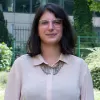Erasmus+ studies within programme countries

Erasmus+, provides individuals with international study, training, and employment opportunities. By encouraging professional and personal development and fostering intercultural understanding, it gives participants different tools to actively participate in society and have a meaningful impact on their own communities, as well as being more prepared for the job market and contributing to the European project and sentiment. It is, indeed, much more than just a mobility programme! Moreover, on a personal level, Erasmus+ will be a key step to expand your horizons and make connections all over Europe and beyond, whether you're studying abroad or experiencing different cultures within the other different kinds of mobility programmes it offers.
Within the Erasmus+ Programme you can choose to undertake an exchange period during your higher education studies. This experience can add value to your curriculum, enhance your academic competencies and open a wider network of people, reinforcing cultural exchange.
Requirements
To take part in an Erasmus+ mobility within your higher education studies, you must:
- Be resident and/or study in a country associated to the Erasmus+ programme;
- Be enrolled in a Higher Education Institution, pursuing a Bachelor, Master, or Doctoral programme;
- Be supported by both your home and host institution, which comprises the elaboration and signature of an inter-institutional agreement (also called “Learning Agreement”)
Destinations
Length
Every study cycle, you can engage in activities like training, research, and study for a minimum of 2 to a maximum of 12 months. Indeed, the three cycles of higher education serve as the framework for mobility opportunities, and you can benefit up to 12 months of Erasmus+ mobility for each of them.
- Long-term mobility: minimum of 2 months to a maximum of 12 months abroad
- Short-term mobilities: between 5 to 30 days abroad
- Maximum total duration: 12 months within one study cycle. It is possible to do more than one exchange within that time frame. For "one-cycle" courses such as medicine, you can go abroad with Erasmus+ for as long as 24 months
Just to give you an example, you could go on a full-year mobility for your Bachelor’s, and then decide to spend a semester abroad (6 months) during your Master’s, too.
Study fields
Depending on the programme you are enrolled in. Each HEI has agreements with various universities, specific to each course, and you must choose your preferred option from that list.
Funding
Available soon
How to apply?
There is no central website or unified application form to apply for Erasmus+ Studies. Therefore, to begin your application, you should contact the International Relations Office or Erasmus+ Office at your Higher Education Institution, as they will guide you through the application process, deadlines and requirements.
Each HEI has agreements with various universities, specific to each course, and you must choose your preferred option from that list. Based on the available partner universities, you should create a priority list of the institutions you are most interested in.
The selection process considers the number of available spots at each university and the academic performance of the applicants. Additionally, some universities may require proof of language proficiency.
Here are the steps you should follow to make sure you got it all right:
- Check the deadline for applications of your sending institution and the eligibility criteria with your International Relations Office/Erasmus+ Office
- Choose the institution where you want to go on exchange - the Faculty or Departmental Erasmus+ coordinator can support you in making the best decision.
- Apply at your higher education (sending) institution - Application procedures vary, but it is most common to submit a CV, motivation letter and proof of your language proficiency.
Learning Agreement
Before your study period abroad, you must sign a “Learning Agreement for Studies” (LA) with your sending and receiving institutions. This document defines how your courses abroad will be recognised at home, ensures the preparations are clear for all parties and sets the rights and responsibilities of the various parties. The Faculty/Departmental Erasmus+ coordinator should support you in preparing your Learning Agreement.
What to keep in mind when preparing your LA
- Look at the course catalogue of you receiving institution already at application stage
- Choose courses that are based on your learning needs, and that are compatible with your study programme
- Courses do not have to match, but they need to be comparable as a group and content as those in your study programme at home
- Check if the courses you have selected make up enough ECTS to fulfill the requirements of your sending institution
- Ask about the grade transfer system at your sending institution - grade systems vary from country to country
- Remember that the Learning Agreement needs to be accepted and signed before your departure, so you need to start this procedure as early as possible.
Note that your learning agreement might need to be changed after you arrive at your receiving institution. Most often that is due to conflict schedules, and in fact, it happens in about 60% of Learning Agreements prepared before departure, so stay flexible and be ready to adjust. These modifications should be agreed upon by all parties (you, sending and receiving institution) within four to seven weeks after the start of each semester.
Many universities have this process already digitalised - students can go abroad thanks to Online Learning Agreement. OLA is the simplest and most convenient way to complete the Learning Agreement online where you can have it signed, receive comments from sending and receiving institutions, and have an overview of the final version of the document. Here you can access the platform and here you can find a video with the login process explained.
Contact
This information is not available at the moment.



